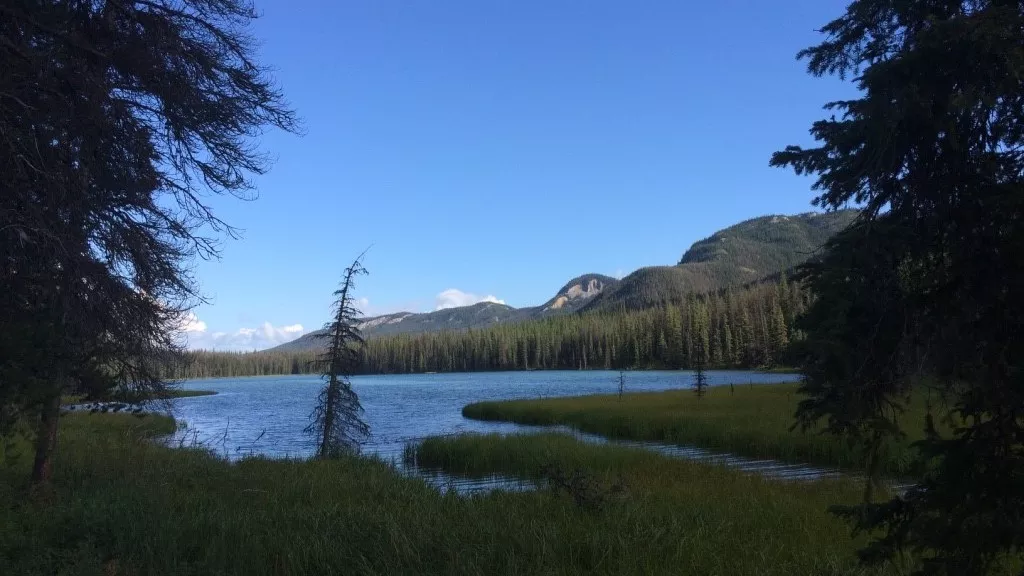Concepts of wilderness and economic development
First Nations Studies Associate Professor Dr. Daniel Sims has been working extensively with communities in the Tsek’ehne Nation to determine how concepts of wilderness have impacted economic development in the territories. A new grant from the Social Sciences and Humanities Research Council Insight Grant program will help Sims further his research.

Plans for economic development in a remote watershed in northern B.C. have ebbed and flowed for more than 150 years, with few ventures gaining ground.
UNBC First Nations Studies Associate Professor Dr. Daniel Sims hopes to explore the connection between concepts of wilderness and development in the Finlay-Parsnip watershed by examining the cycle of these planned-then-abandoned farming and mining projects between 1871 and 1956.
The watershed lies in the traditional territories of the Tsek’ehne Nation, which includes the Tsay Keh Dene, McLeod Lake and Kwadacha First Nations. Sims is a member of the Tsay Keh Dene First Nation. He first noticed this cycle while reading through past, digitized issues of the Prince George Citizen newspaper when he was preparing a forward for his master’s dissertation several years ago.
“Every generation there would be a new project proposed for the watershed – today, it’s generally pipelines, mining or forestry – and each time a new project is proposed, it’s presented as wilderness that needs to be developed,” Sims notes.
“Then when the project doesn’t go forward – as it often doesn’t – or when something happens, or it doesn’t quite go off the way they want it to, then it becomes a wilderness that’s untameable and the cycle starts over again.”
Of particular importance, Sims says, “It appears local Tsek’ehne may have actively encouraged outsiders to view the territory as untameable in hope of preventing non-Tsek’ehne settlement and development. In short, they were knowingly engaging in colonial discourses to resist colonialism.”
Sims and his research team have been awarded an Insight Grant from the Social Sciences and Humanities Research Council worth more than $389,000 over the next five years. The funding will allow the researchers to dig deeper into this critical and nuanced aspect of the wilderness-development relationship.
The research team includes UNBC First Nations Studies Adjunct Professor Dr. Tyler McCreary and independent researcher Nicole Wheele, as well as a graduate student and undergraduate student. Sims will be looking to hire research assistants over the course of the project.
“Our earlier research has highlighted the need for further study of Tsek’ehne oral histories about these proposed developments, especially given that most of the relevant archival records do not mention the Tsek’ehne at all,” says the Associate Professor.
Knowledge of past ventures still exists in the area – from Elders’ sharing memories of dome houses high up on a mountain in the territory to a huge tractor wheel in a remote spot along the Ingenika River.
“I have talked with the Elders in the community and they were aware of what was happening, but the finer details have been lost and the information isn’t there in the general history of B.C.”.
Sims points to the recorded history of the Alaska Highway as another example of what he calls this ‘narrative-forgetting'.
“We know where it is now, but there were originally plans to potentially put it up the Rocky Mountain Trench – through McLeod Lake, through Fort Graham, through Fort Ware and Ingenika.
“Elders are well aware of this because they were often involved in the surveying, but I would meet historians who insisted it was always supposed to be the other side of the Rockies. So, it’s an interesting omission.”
Sims says his team will continue to engage in a meaningful way with the community to help conceptualize what has occurred and document these histories.
“Documenting these histories remains important to both the Tsek’ehne and the broader Canadian public,” says Sims. “The findings will contribute to our understanding of Indigenous agency, as well as Indigenous erasure, and will make a major contribution to the fields of Indigenous, economic and environmental history.”